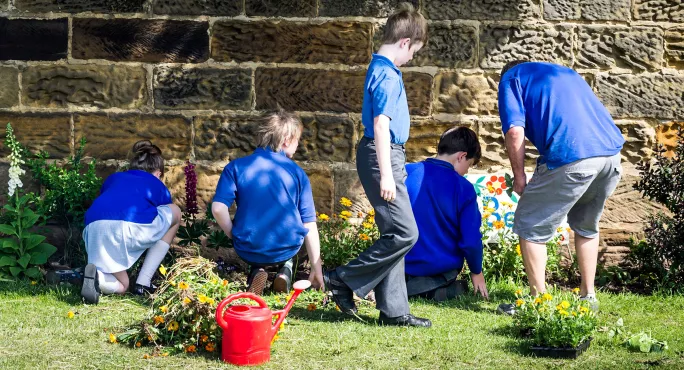- Home
- Teaching & Learning
- General
- Schools grounds in Scotland and the case for ‘urgent’ change
Schools grounds in Scotland and the case for ‘urgent’ change

School grounds are a vital hub of daily learning, play, sport and health. They are a unifying feature of life for every child, regardless of their challenges or privileges.
They are a place where children and young people are at the forefront of decisions and action, where environmental and climate literacy is built. They are a place of play, central to all children’s life and development - and where children spend up to a fifth of their time.
School grounds are also, increasingly, the only safe outdoor space that our children have access to. These grounds cover an area the size of Dundee and are some of our most heavily used public outdoor spaces, sitting at the heart of communities.
School grounds regulations ‘unfit for purpose’
And yet the regulations around school grounds (and buildings) are out of date and unfit for purpose. In Scotland these regulations date back to 1967. They cover all aspects of what is expected across the learning estate - from the size of buildings and “playing fields” to the number of toilets, medical rooms and staffrooms.
As well as the regulations, we have a layer of non-statutory guidance. Much of this was developed over 20 years ago and has not been kept up to date, other than for early-years settings.
Through the 57 years of the regulations, we have seen school grounds eroded by space for cars, a false primacy of the location of buildings on a site, falling budgets for new or existing spaces and so many more unhelpful trends.
- Children’s health: Making it safe for every child to walk or cycle to school
- Assessment: How do we establish tests worth teaching to?
- Accountability: Have Scottish secondaries got too much autonomy?
Over time, our education policies, curriculum and pedagogy have been transformed, as has the world we live in.
Yet the regulations and guidance make no mention of the rights of the child or the right to play in nature on a daily basis; learning for sustainability, climate change and adaptation; the biodiversity crisis; poor air quality; or the huge health gains through having great school grounds. Meanwhile, environmental policies have changed, with money bypassing school grounds in favour of larger “rewilding” projects away from population centres.
Asphalt, vandalism and tired buildings
We know that most of our school grounds space consists of asphalt or depleted soils under mown grass, and that inequality in school grounds reflects the inequalities in society. We know that teachers need more support and training to support their learners when outdoors, and that schools face practical challenges around tight sites, vandalism, tired buildings and more.
As the national school grounds charity, we are therefore calling time on the 1967 regulations, out-of-date guidance and the erosion of our school grounds. We are asking the Scottish Parliament to value our school grounds through new regulation, support for new guidance and a strategy for real change.
We expect the new regulations to reflect the modern education system and the changed world we live in, laying out a stronger set of requirements. We expect a rights-based approach to school grounds focusing on the triple crises of climate change, nature loss and the mental health difficulties among children and young people. We expect a redirection of private and state funding into our schools for nature, water and the reduction of carbon emissions.
Inspiring a ‘step change’
The new guidance will inspire a step change in how school grounds are funded, how our society values them and the opportunities our children can make of wonderful, green and accessible spaces for learning, play, sport and health.
The challenges are very real, but we are seeking partners in the Scottish School Grounds Collective to take this work forward to help to create happier, healthier, richer environments to benefit all learners. I hope you will join us.
Matt Robinson is chief operating officer and Scotland director of Learning through Landscapes, an outdoor learning and play charity
For the latest Scottish education news, analysis and features delivered directly to your inbox, sign up to Tes magazine’s The Week in Scotland newsletter
You need a Tes subscription to read this article
Subscribe now to read this article and get other subscriber-only content:
- Unlimited access to all Tes magazine content
- Exclusive subscriber-only stories
- Award-winning email newsletters
Already a subscriber? Log in
You need a subscription to read this article
Subscribe now to read this article and get other subscriber-only content, including:
- Unlimited access to all Tes magazine content
- Exclusive subscriber-only stories
- Award-winning email newsletters
topics in this article



